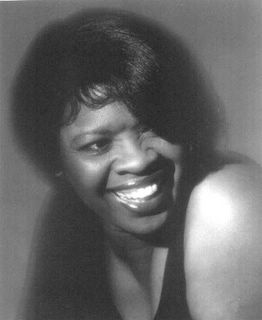Irma and Eddie Get It Right

Queen Irma
As you may have noticed, I don’t post many ballads here. Not my speed, most of the time. I made an exception with Irma Thomas’ “Wish Someone Would Care” right after New Orleans went under; and I’m making another. Since February is her birth month, and she just received a lifetime achievement award from OffBeat, I’ll be putting up several seldom heard recordings of her in weeks to come, starting with

"I May Be Wrong" (Allen - Johnson)
Irma Thomas, Ron 330, 1960
Then again. . .
By now, I hope most of you HOTG regulars know of Irma’s early 1960’s Minit recordings with Allen Toussaint in charge. In just a couple of years, she made classic, as yet untouched versions of some of his songs. But what many people don’t know is that prior to signing with Minit, Irma made two singles for Ron Records in New Orleans with the arranging, production, and, in this case, writing handled by Eddie Bo, who was making his own records on the Ric subsidiary at the time.
Thomas had auditioned for Minit’s owners at the start of 1960; and, though interested, they did not sign her. So, Tommy Ridgley, who had given Irma her first break by hiring her to sing with his band, introduced her to Joe Ruffino, owner of the Ric and Ron labels. As luck would have it, he was looking for a good female lead to do a new song by local writer Dorothy Labostrie, “Don’t Mess With My Man”, and quickly signed the 19 year old Thomas to the Ron label and had her record the tune. First a local hit, the song on that first single made national noise, and almost broke into the top twenty on the R&B chart. It’s success allowed Thomas to do some touring. In the summer of 1960, she recorded “A Good Man”, which she co-wrote with Bo in an attempt to recreate the feel of the previous hit, and another Bo composition, “I May Be Wrong”. Those sides became her final Ron single. When it did not get any traction, Minit’s Joe Banashak managed to get her to sign with him and start working with his talented young A&R dynamo by the name of Toussaint.
“I May Be Wrong” is a nicely written and arranged effort by Bo that Irma takes on with a confidence and strength that belie her young age. Her voice doesn’t yet have the deep resonance it has steadily gained as she has matured; but it reveals to the listener that this is a singer to be reckoned with. She fulfilled that early promise in spades on subsequent recordings for Minit, Imperial, Chess, Fungus, Canyon, and Rounder, among others. If you haven’t yet fully explored her available catalog, I encourage you to grab what you can and see for yourself why they call her The Soul Queen Of New Orleans.
Note: The more attentive might question why I attribute the songwriting here to Bo, when the record label says “Allen-Johnson”. Well, the Johnson is Delores Johnson, Eddie’s wife at the time, whose name he used on quite a few of his compositions over the years, either to please her, evade the IRS, or both. The Allen is Bill “Hoss” Allen, popular and influential R&B DJ in those days at the powerful clear-channel radio station in Nashville, WLAC. Many label owners and/or writers tried to curry favor for their records by giving Allen part of the publishing or songwriting credit (thus, royalties, if any). That’s one way the music bidniz worked its magic back then. Today it’s offering trips, laptops and lap dances. . . .














